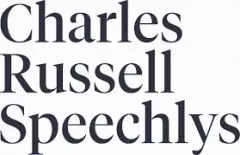In the same month that Microsoft cut off thousands of gamers who had modified their Xboxes to play pirated videogames, the Court of Appeal has, in the case of R v Gilham, upheld a conviction of a man who sold modification chips allowing gamers to play pirate or counterfeit games.
The Copyright Designs and Patents Act 1988 (CDPA 1988) makes it a criminal offence to sell or distribute "any device, product or component which is primarily designed or produced ... for the purpose of enabling or facilitating the circumvention of effective technological measures". Broadly speaking effective technological measures ("EMTs") means any technology designed to protect a copyright work other than a computer program. To secure a conviction, the use of the device, product or component in question must have involved "substantial copying" of a copyright work.
Gilham ran a business importing and selling modchips for use in conjunction with a variety of games consoles. The modchips enabled gamers to use counterfeit or unauthorised copies of games by overcoming embedded codes which are designed to only allow players to use CD-ROMs or DVDs containing a corresponding code. Gilham was convicted by the High Court but appealed to the Court of Appeal that his modchips did not enable copying of a "substantial part" of the copyright in the games.
The Court of Appeal dismissed the appeal and upheld his conviction. The Court emphasised that there are a variety of copyrights which protect a computer game. Amongst other things, there is artistic copyright in the various drawings making up the display on the TV screen, and these were reproduced in full while playing the game. Despite the fact that each image is only seen for an instant, the CDPA 1988 expressly provides that it is an infringement of copyright to make "transient copies".
The "little and often" approach to the meaning of "substantial", in the context of copyright infringement, was also supported in the judgment. The Court noted that it is common sense that a person playing a counterfeit or pirated copy of a computer game on his games console, which allows him to see and hear visual displays and sounds that are the subject of copyright, does in fact make a copy of at least a substantial part of the work, even though at any one moment in time there is in the RAM of the console, on the screen and audible only a very small part of the works.
This case relates to a very complex and technical part of the CDPA 1988. The facts of this case are very similar to those in R v Higgs (2008), where however Higgs' conviction was quashed because it could not be shown that there was any copying of the copyright in the games. By contrast, in this case it was proven that data was copied into the RAM of the games console.
The content of this article is intended to provide a general guide to the subject matter. Specialist advice should be sought about your specific circumstances.


